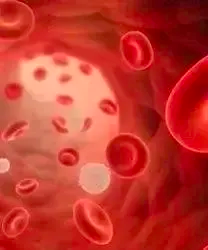Efficacy Seen in Eryaspase/Chemotherapy for ALL With Risk for Hypersensitivity Reactions
Chemotherapy with the addition of eryaspase showed biological efficacy in reducing hypersensitivity reactions to asparaginase in patients with acute lymphoblastic leukemia.

Adding eryaspase to chemotherapy showed biological efficacy and tolerability in patients with acute lymphoblastic leukemia (ALL) who could develop hypersensitivity reactions to Escherichia coli (E. coli)–derived pegylated asparaginase, according to updated results from an expanded access program of eryaspase that were presented during the 2021 ASH Annual Meeting & Exposition.1
“Asparaginase is an integral component of chemotherapy regimens for the treatment of ALL. Survival of children with ALL has reached 90%. The clinical benefit of integrating asparaginase in ALL treatment in adult patients is partially offset by the development of frequent and potentially severe adverse reactions, which occur in 10% to 35% of patient, especially hypersensitivity reaction, coagulopathy, hepatic and pancreatic toxicities,” the study authors stated in their poster presented at the meeting.
However, they added, encapsulation of asparaginase in red blood cells has been shown to reduce toxicities from treatment while prolonging asparaginase activity.
Therefore, in the non-randomized, multicenter, open label phase 1 trial, investigators assessed the limiting toxicities, safety, and biological efficacy of eryaspase—an infusion of E-Coli– and Erwinia-derived asparaginase therapies—in combination with chemotherapy in patients under 55 with ALL.
The agent was administered as a replacement therapy at a dose of 150 U/kg every 2 to 3 weeks for the remaining courses of asparaginase therapy.
Limiting toxicities were defined as worsening of a pre-existing condition or occurrence of a new toxicity, including grade 3 or higher clinical or biochemical pancreatic toxicity deemed related to asparaginase therapy; grade 3 or higher hepatic, allergic, or coagulation disorders deemed related to asparaginase therapy; grade 3 or higher renal toxicity; and any other grade 3 or higher toxicity related to eryaspase treatment.
Of the 18 patients who received eryaspase, 12 completed treatment and the study, 2 stopped treatment and completed the study, and 4 stopped treatment and the study.
The mean age was 20.3 years (range, 3-51), with 10 patients under the age of 18. The majority of patients were male (66.7%). Eleven patients were hypersensitive to both E-Coli and Erwinia, and 7 were triple sensitive to E-Coli, Peg E-Coli, and Erwinia. The median time from first diagnosis was 9.41 months (range, 4.0-93.1). In total, 12 patients were diagnosed with B-cell leukemia and 6 with T-cell leukemia, while half were de novo and the other half (n = 9) had relapsed disease.
Seven patients (38.8%) experienced 24 total adverse event (AE)-limiting toxicities. The most common were bone marrow failure, and “were indicative of the underlying ALL disease process and of the concomitant chemotherapy-related myelosuppression,” the study authors wrote.
All patients experienced a treatment-emergent adverse event (TEAE; n = 130). One patient had an allergic reaction to eryaspase (grade 2). Eleven patients had a TEAE related to eryaspase (n = 29), including 6 patients with grade 3 or higher (n = 22) and 1 patient whose grade 3 or higher TEAE was fatal (n = 1). In total, 17 patients experienced a grade 3 and 4 TEAE (n = 110). The most common TEAE associated with eryaspase was anemia.
“The safety profile was overall acceptable, with no hepatic or pancreatic toxicities observed,” the study authors wrote. “This is consistent with other safety profiles reported in the eryaspase program.”
According to the study authors, there was approximately a 50% reduction in plasma asparagine concentration at 3 days following eryaspase infusion, which was followed by a slow return toward baseline before the next infusion. Seven patients had a 100% reduction (39%), 7 had at least a 50% reduction (39%), 1 had at least a 30% reduction (6%), and 3 patients experienced no effect on asparagine levels (17%).
Moreover, they reported there was approximately a 50% reduction in plasma glutamine 3 days following eryaspase infusion, followed by a slow return toward baseline before the next infusion.
When evaluating pharmacokinetics, the sparse whole blood asparaginase concentrations following 150 U/L were within the range of concentrations expected for this dose level, the study authors wrote. The range of whole blood asparaginase at 14 days following the first infusion was 111 U/L to 1160 U/L, “which would be equivalent to the trough (nadir) for infusions every 2 weeks,” they added. Lastly, the minimum asparaginase concentration of 111 U/L exceeded the target of 100 U/L.
One patient had at least 1 remission in the induction phase and 17 patients experienced at least 1 complete remission overall. One patient progressed during the study, and 2 patients relapsed.
The survival rates at 6, 12, and 18 months, respectively, were 88.9% (95% CI, 44.6%-98.7%), 77.8% (95% CI, 44.6%-92.5%), and 77.8% (95% CI, 44.6%-92.5%). Fourteen patients (77.8%) were still alive at the end of the study.
“This study is the first study to demonstrate activity of an asparaginase therapy in double [and even triple] allergic patients who received prior E-Coli– and Erwinia-derived asparaginase,” the study authors concluded. “Eryaspase provides an additional option for patients for whom further asparagine treatment is contraindicated due to toxicity.”
Reference:
1. Bertrand Y, Boissel N, Schmitt C, et al. Expanded access program: evaluating safety of erythrocytes encapsulating L-asparaginase in combination with polychemotherapy in patients under 55 years Old with acute lymphoblastic leukaemia (ALL) at risk to receive other formulations of asparaginase. Presented at: 2021 ASH Annual Meeting and Exposition; December 11-14, 2021; Atlanta, Georgia. Abstract 1214.










